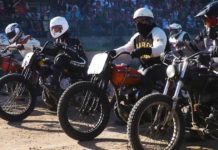At one point, I mentioned that I wished I had brought my drone to capture a bird’s-eye view of the picturesque landscape. I immediately sensed a discomfort from the group about my comment. Justin Jones, also a longtime hunter and the Eastern Oregon stewardship manager for the Nature Conservancy, later explained to me what I had noticed.
He cited the principle of “fair chase,” which involves deliberately seeking to somewhat even the odds while casting the animals as worthy opponents in a game of life and death. According to this ethic, he said, hunters hike rather than use all-terrain vehicles; they use bows and arrows rather than high-powered rifles with telescopic sights; and by all means, they forego airplanes for the purpose of locating prey. A drone would have been fine for me to use, Mr. Jones said, but only if we ensured that it in no way helped their hunt.
Hunting is a time-consuming endeavor that involves large amounts of planning. Depending on the type of hunting, it entails long periods of sitting quietly in the elements. If done as a group, it is an experience imbued with camaraderie, one that forges lifelong friendships not to mention an appreciation for the outdoors.
Without cell reception, I had to slow down and unplug. The silence, the surroundings, the waiting felt psychologically cleansing.
This is partly why hunters view hunting not just as a hobby, but as a cultural value and a tradition they want to pass down to their children. A Fish and Wildlife survey from 2016 found that only about 5 percent of Americans 16 years old and older hunt, roughly half the percentage of those who hunted 50 years ago — a decline most researchers believe will accelerate.
On the third day of trying, Ms. Cassens succeeded in shooting and killing a 450-pound elk. For a half-hour, the group huddled near the fallen animal, vacillating between long somber silences and exuberant hugs. Next, the group spent an hour or so strenuously but carefully field dressing their kill, which means carving up the animal into pieces, leaving its entrails on site while packing the muscles and limbs into their packs for the hike out.
Mr. Jones busily climbed a nearby tree to secure one of three hidden outdoor cameras over the remains of the elk carcass that the hunters planned to leave behind. As part of his effort to raise awareness of lead ammunition concerns, he wanted to capture footage of the grizzlies, raptors and foxes that would soon feed on the carcass. “Come and get it,” Ms. Cassens said. “Lead-free meal, right here!”
Source : Nytimes













